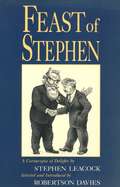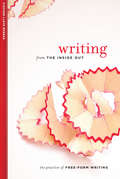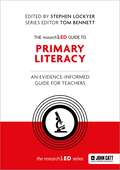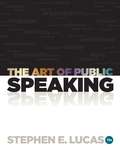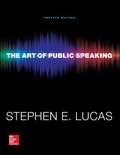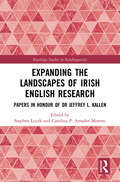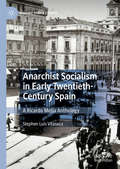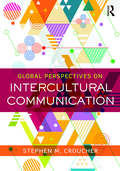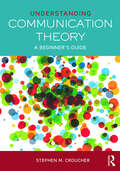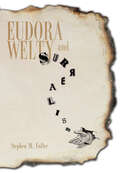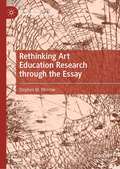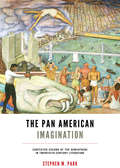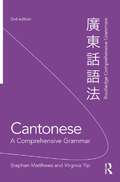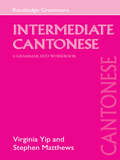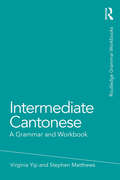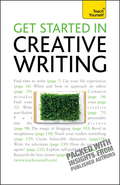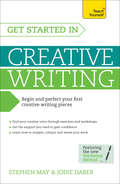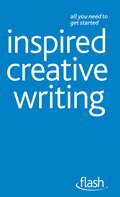- Table View
- List View
Feast of Stephen
by Stephen Leacock“Do you know the characteristic wine of Madeira?…I do not know whether Leacock ever drank Madeira himself – he was very much a Scotch-whisky man – but I enjoy Madeira greatly, and I never drink it without thinking of Leacock, who was sometimes dry, sometimes sweet, but who always leaves upon the tongue a hint of brimstone…” In his witty and illuminating introduction, which takes up the first third of the book, Robertson Davies invites us to join him in a Feast of Stephen. Davies’ selection of fifteen pieces from Leacock’s less familiar works presents the humorist as a true, broad, and sympathetic interpreter of Canadian life, as a man who may have lacked self-knowledge and sensitive insight into the feelings of others, but “whose best work was the outpouring of genius.” All shades of Leacock’s writing are represented here, from the “brilliant nonsense which made some critics liken him to Lewis Carroll,” to his occasional attacks of “aggressive Lowbrowism.” Together in all their diversity, Davies’ selections pay tribute to the gifts of exuberance, originality, and slightly malicious truth with which Leacock so entertainingly extends our vision.
Writing from the Inside Out
by Stephen Lloyd WebberTrue creativity flows continually throughout life, breaking free of form. In Writing from the Inside Out, author, writing coach, and yoga teacher Stephen Lloyd Webber shares his practice of creative writing as a path for self-realization. His book includes many practical writing exercises and connects readers with esoteric tantric yoga insights, oral traditions, and Zen storytelling modalities. Using the methods described here, Stephen was able to put together over twenty book-length creative projects in the course of just one year.After reading Writing from the Inside Out readers will find that they can overcome productivity plateaus caused by negative self-talk, anxiety, stress, or lack of clarity. Written for anyone seeking self-development, Stephen Lloyd Webber shares his expertise as a yoga practitioner, poet, and retreat coordinator to help readers live the integrated, creative lives they were born to enjoy.
The researchED Guide to Primary Literacy: An evidence-informed guide for teachers
by Stephen LockyerresearchED is an educator-led organisation with the goal of bridging the gap between research and practice. This accessible and punchy series, overseen by founder Tom Bennett, tackles the most important topics in education, with a range of experienced contributors exploring the latest evidence and research and how it can apply in a variety of classroom settings.Literacy is one of the most powerful and transformative learning tools: making changes and improvements in Literacy will have a direct impact on your work, your learning and your aspirations across all subjects in the curriculum.In this book, Stephen Lockyer brings together contributions from expert writers, including Clare Sealy, Emma Stokes, Neil Almond and Andrew Percival, to show how making tiny, incremental changes with consistency and genuine purpose can have a big effect on your students, their literacy, and their learning. Each chapter has an abundance of ideas to take into your classroom and have a direct impact on the pupils.
The researchED Guide to Primary Literacy: An evidence-informed guide for teachers
by Stephen LockyerresearchED is an educator-led organisation with the goal of bridging the gap between research and practice. This accessible and punchy series, overseen by founder Tom Bennett, tackles the most important topics in education, with a range of experienced contributors exploring the latest evidence and research and how it can apply in a variety of classroom settings.Literacy is one of the most powerful and transformative learning tools: making changes and improvements in Literacy will have a direct impact on your work, your learning and your aspirations across all subjects in the curriculum.In this book, Stephen Lockyer brings together contributions from expert writers, including Clare Sealy, Emma Stokes, Neil Almond and Andrew Percival, to show how making tiny, incremental changes with consistency and genuine purpose can have a big effect on your students, their literacy, and their learning. Each chapter has an abundance of ideas to take into your classroom and have a direct impact on the pupils.
The Art of Public Speaking
by Stephen LucasThe Art of Public Speaking 11e continues to define the art of being the best by helping today's students become capable, responsible speakers and thinkers. With a strong focus on the practical skills of public speaking and grounded in classical and contemporary theories of rhetoric, The Art of Public Speaking offers full coverage of all major aspects of speech preparation and presentation. Utilizing the full suite of resources, students learn to internalize the principles of public speaking, build confidence through speech practice, and prepare for success in the classroom and beyond. With the new Enhanced Speech Capture in Connect Lucas, instructors now have the ability to evaluate live speeches using a customizable rubric in the classroom. Instructors may also upload speech videos on students' behalf to create and manage true peer review assignments. With its ground-breaking adaptive learning system, Connect LucasTM also helps students "know what they know," while guiding them to experience and learn important concepts that they need to know to succeed. With McGraw-Hill CreateTM, instructors can now customize their Lucas 11e textbook to the section level, selecting and arranging only the sections covered in the course. The new Create system will automatically repaginate and re-number chapters, sections, graphs, and illustrations, based on how the instructor chooses to arrange them. This deep level of customization guarantees that students pay only for the content covered in the course.
The Art of Public Speaking (10th Edition)
by Stephen LucasIn preparing this edition, I have retained what readers have identified as the main strengths of previous editions. The book continues to be informed by classical and contemporary theories of rhetoric but does not present theory for its own sake. Keeping a steady eye on the practical skills of public speaking, it offers full coverage of all major aspects of speech preparation and presentation.
The Art of Public Speaking 12th Edition
by Stephen LucasThe Art of Public Speaking personalizes learning for every student no matter who they are or where they are, ensuring that they come to your public speaking class confident, prepared with the principle foundations, and ready to participate in your teaching and coaching. Connect is the only integrated learning system that empowers students by continuously adapting to deliver precisely what they need, when they need it, and how they need it, so that your class time is more engaging and effective.
Expanding the Landscapes of Irish English Research: Papers in Honour of Dr Jeffrey L. Kallen (Routledge Studies in Sociolinguistics)
by Stephen LucekThis collection brings together work from scholars across sociolinguistics, World Englishes and linguistic landscapes to reflect on developments and future directions in Irish English, building on the ground-breaking contributions of Jeffrey Kallen to the discipline. Taking their cue from Kallen’s extensive body of work on Irish English, the 20 contributors critically examine advances in the field grounded in frameworks from variationist sociolinguistics and semiotic and border studies in linguistic landscapes. Chapters cover pragmatic, cognitive sociolinguistic, sociophonetic, historical and World Englishes perspectives, as well as two chapters which explore the border between Northern Ireland and the Republic of Ireland through the lens of perceptual dialectology and linguistic landscape research. Taken together, the collection showcases the significant role Kallen has played in the growth of Irish English studies as a field in its own right and the impact of this work on a new wave of researchers in the field today and beyond. This volume will be of particular interest to scholars of varieties of English, variationist sociolinguistics and linguistic landscape research.
Anarchist Socialism in Early Twentieth-Century Spain: A Ricardo Mella Anthology (Hispanic Urban Studies)
by Stephen Luis VilasecaAnarchist Socialism in Early 20th Century Spain is the first English translation of and critical introduction to Ideario, a collection of newspaper and journal articles written by Spanish anarchist Ricardo Mella. Given that Mella is virtually unknown to the English-speaking world, this book provides readers access to his extensive body of work about Spain, human nature, and a world increasingly dominated by capitalism. Suitable for both the general public interested in learning more about anarchist ideas and for scholars studying twentieth-century Spain, the three introductory essays help to introduce Mella, ground his work in the context of Spanish anarchism, and draw connections between Mella and the urban in late nineteenth- and early twentieth-century Spain. Stephen Luis Vilaseca’s translation is accessible and engaging.
Global Perspectives on Intercultural Communication
by Stephen M. CroucherWhat is intercultural communication? How does perspective shape a person’s definition of the key tenets of the term and the field? These are the core questions explored by this accessible global introduction to intercultural communication. Each chapter explores the topic from a different geographic, religious, theoretical, and/or methodological perspective, with an emphasis on non-Western approaches, including Buddhist, South American, Muslim, and Chinese perspectives. Featuring the voices of a range of international contributors, this new textbook presents the full breadth of diverse approaches to intercultural communication and showcases the economic, political, and cultural/societal needs for and benefits of communicative competence.
Understanding Communication Theory: A Beginner's Guide
by Stephen M. CroucherThis book offers students a comprehensive, theoretical, and practical guide to communication theory. Croucher defines the various perspectives on communication theory—the social scientific, interpretive, and critical approaches—and then takes on the theories themselves, with topics including interpersonal communication, organizational communication, intercultural communication, persuasion, critical and rhetorical theory and other key concepts. Each theory chapter includes a sample undergraduate-written paper that applies the described theory, along with edits and commentary by Croucher, giving students an insider’s glimpse of the way communication theory can be written about and applied in the classroom and in real life. Featuring exercises, case studies and keywords that illustrate and fully explain the various communication theories, Understanding Communication Theory gives students all the tools they need to understand and apply prominent communication theories.
Eudora Welty and Surrealism
by Stephen M. FullerEudora Welty and Surrealism surveys Welty's fiction during the most productive period of her long writing life. The study shows how the 1930s witnessed surrealism's arrival in the United States largely through the products of its visual artists. Welty, a frequent traveler to New York City, where the surrealists exhibited, and a keen reader of magazines and newspapers that disseminated their work, absorbed and unconsciously appropriated surrealism's perspective in her writing. In fact, Welty's first solo exhibition of her photographs in 1936 took place next door to New York's premier venue for surrealist art. In a series of readings that collectively examine A Curtain of Green and Other Stories, The Wide Net and Other Stories, Delta Wedding, The Golden Apples, and The Bride of the Innisfallen and Other Stories, the book reveals how surrealism profoundly shaped Welty's striking figurative literature. Yet the influence of the surrealist movement extends beyond questions of style. The study's interpretations also foreground how her writing refracted surrealism as a historical phenomenon. Scattered throughout her stories are allusions to personalities allied with the movement in the United States, including figures such as Salvador Dalí, Elsa Schiaparelli, Caresse Crosby, Wallace Simpson, Cecil Beaton, Helena Rubinstein, Elizabeth Arden, Joseph Cornell, and Charles Henri Ford. Individuals such as these and others whom surrealism seduced often lead unorthodox and controversial lives that made them natural targets for moral opprobrium. Eschewing such parochialism, Welty borrowed the idiom of surrealism to develop modernized depictions of the South, a literary strategy that revealed not only cultural farsightedness but great artistic daring.
The Contemporary Anglophone Travel Novel: The Aesthetics of Self-Fashioning in the Era of Globalization (Literary Criticism and Cultural Theory)
by Stephen M. LevinThe Contemporary Anglophone Travel Novel explores the themes of alienation and displacement in a genre of post-World War II novels that portrays the pursuit of an authentic travel experience in a culturally unfamiliar place. Levin explores two questions: why does travel to an "undiscovered" place—one imagined outside the bounds of modernity—remain an enduring preoccupation in western civilization; and how does the representation of adventure travel change in the era of mass culture, when global capitalism expands at a rapid pace. The book argues that whereas travel writers between the wars romanticized their journeys overseas, travel writing after World War II takes an increasingly melancholic and nihilistic view of a commercial society in which adventure travel no longer proves capable of producing a sense of authentic selfhood. Through close analysis of specific texts and authors, the book provides a rich discussion of anglophone literature in the cultural context of the twentieth-century. It examines the capacity of popular culture for social critique, the relationship between leisure travel and postcolonial cultures, and the idealization of selfhood and authenticity in modern and postmodern culture. The study reflects the best potential of interdisciplinary scholarship, and will prove influential for anyone working in the fields of contemporary literature, cultural theory, and cross-cultural studies.
Rethinking Art Education Research through the Essay (Palgrave Studies in Educational Futures)
by Stephen M. MorrowThis book explores the pedagogical applications of critical thinking in art education and scholarship. In the first part of the book, the author delves into the ways that arts-based educational research has incorporated critical thinking in order to illuminate the context for the subsequent study. The second half of the book focuses on the essay as a genre used in creative nonfiction and film in order to enact the concept of critical thinking in art education. In this way, the book sheds light on a new landscape of thinking arts education and thinking scholarship through the essay that is practiced in creative nonfiction and cinema.
The Pan American Imagination: Contested Visions of the Hemisphere in Twentieth-Century Literature (New World Studies)
by Stephen M. ParkIn the history of the early twentieth-century Americas, visions of hemispheric unity flourished, and the notion of a transnational American identity was embraced by artists, intellectuals, and government institutions. In The Pan American Imagination, Stephen Park explores the work of several Pan American modernists who challenged the body of knowledge being produced about Latin America, crossing the disciplinary boundaries of academia as well as the formal boundaries of artistic expression--from literary texts and travel writing to photography, painting, and dance. Park invests in an interdisciplinary approach, which he frames as a politically resistant intellectual practice, using it not only to examine the historical phenomenon of Pan Americanism but also to explore the implications for current transnational scholarship.
Cantonese: A Comprehensive Grammar (Grammar Workbooks Ser.)
by Virginia Yip Stephen MatthewsCantonese: A Comprehensive Grammar is a complete reference guide to Cantonese as spoken by native speakers in Hong Kong. It presents a fresh and accessible description of the language, concentrating on the real patterns of use in current Cantonese. This makes it the ideal reference source for all learners and users of Cantonese, irrespective of level, in schools, colleges, universities and adult classes of all types. Moreover, it will provide a lasting and reliable resource for all fluent speakers of the language. The book is organized to promote a thorough understanding of Cantonese grammar. Arranged by both syntactic categories and language functions, the Grammar provides an in-depth treatment of structures and pays special attention to idiom and speech registers. Explanations are full, clear and free of jargon. An extensive index, numbered paragraphs and generous use of headings and cross-references provide readers with easy access to the information they require. Features include: Comprehensive pronunciation section Full use of examples from films, advertising and authentic conversations Cantonese-English parallels highlighted throughout the book All examples given in characters as well as pinyin
Intermediate Cantonese: A Grammar and Workbook
by Virginia Yip Stephen MatthewsIntermediate Cantonese is designed for learners who have achieved basic proficiency and wish to progress to more complex language. Each of the 25 units combines clear, concise grammar explanations with communicatively-oriented exercises to help build confidence and fluency.* Suitable for independent learners and students on taught courses* Many authentic examples from contemporary media, including films, advertising, songs and soap operas* Clear distinction between colloquial and more formal speech registers* Teaches contemporary Cantonese as spoken in Hong KongIntermediate Cantonese and its sister volume, Basic Cantonese, form a structured course of the essentials of Cantonese grammar.
Intermediate Cantonese: A Grammar and Workbook (Routledge Grammar Workbooks)
by Virginia Yip Stephen MatthewsIntermediate Cantonese is designed for learners who have achieved basic proficiency and wish to progress to more complex language. Each of the 25 units combines clear, concise grammar explanations with communicatively oriented exercises to help build confidence and fluency. Features include: Many authentic examples from contemporary media, including films, advertising, songs and soap operas Clear differentiation between colloquial and more formal speech registers Up-to-date analysis of contemporary Cantonese as spoken in Hong Kong. Suitable for independent learners and students on taught courses, Intermediate Cantonese, together with its sister volume, Basic Cantonese, forms a structured course of the essentials of Cantonese grammar.
The Bilingual Child
by Virginia Yip Stephen MatthewsHow does a child become bilingual? The answer to this intriguing question remains largely a mystery, not least because it has been far less extensively researched than the process of mastering a first language. Drawing on new studies of children exposed to two languages from birth (English and Cantonese), this book demonstrates how childhood bilingualism develops naturally in response to the two languages in the children's environment. While each bilingual child's profile is unique, the children studied are shown to develop quite differently from monolingual children. The authors demonstrate significant interactions between the children's developing grammars, as well as the important role played by language dominance in their bilingual development. Based on original research and using findings from the largest available multimedia bilingual corpus, the book will be welcomed by students and scholars working in child language acquisition, bilingualism and language contact.
The Bilingual Child
by Virginia Yip Stephen MatthewsHow does a child become bilingual? The answer to this intriguing question remains largely a mystery, not least because it has been far less extensively researched than the process of mastering a first language. Drawing on new studies of children exposed to two languages from birth (English and Cantonese), this book demonstrates how childhood bilingualism develops naturally in response to the two languages in the children's environment. While each bilingual child's profile is unique, the children studied are shown to develop quite differently from monolingual children. The authors demonstrate significant interactions between the children's developing grammars, as well as the important role played by language dominance in their bilingual development. Based on original research and using findings from the largest available multimedia bilingual corpus, the book will be welcomed by students and scholars working in child language acquisition, bilingualism and language contact.
The Bilingual Child
by Virginia Yip Stephen MatthewsHow does a child become bilingual? The answer to this intriguing question remains largely a mystery, not least because it has been far less extensively researched than the process of mastering a first language. Drawing on new studies of children exposed to two languages from birth (English and Cantonese), this book demonstrates how childhood bilingualism develops naturally in response to the two languages in the children's environment. While each bilingual child's profile is unique, the children studied are shown to develop quite differently from monolingual children. The authors demonstrate significant interactions between the children's developing grammars, as well as the important role played by language dominance in their bilingual development. Based on original research and using findings from the largest available multimedia bilingual corpus, the book will be welcomed by students and scholars working in child language acquisition, bilingualism and language contact.
Get Started In Creative Writing: Teach Yourself (Ty Creative Writing Ser.)
by Stephen MayGet Started in Creative Writing is an indispensible guide to unlocking your creativity, finding your voice and choosing a genre of writing that suits you best, whether fiction or non-fiction, short stories or novels, children's books or travel writing. It features guidelines for do's and don'ts along with suggestions for crafting a distinctive style.With tips from some of the best-known writers of fiction and non-fiction, you will receive loads of helpful advice to enable you get your own work published.NOT GOT MUCH TIME?One, five and ten-minute introductions to key principles to get you started.AUTHOR INSIGHTSLots of instant help with common problems and quick tips for success, based on the author's many years of experience.TEST YOURSELFTests in the book and online to keep track of your progress.EXTEND YOUR KNOWLEDGEExtra online articles at www.teachyourself.com to give you a richer understanding of creative writing.FIVE THINGS TO REMEMBERQuick refreshers to help you remember the key facts.TRY THISInnovative exercises illustrate what you've learnt and how to use it.
Get Started In Creative Writing: Teach Yourself (Ty Creative Writing Ser.)
by Stephen MayGet Started in Creative Writing is an indispensible guide to unlocking your creativity, finding your voice and choosing a genre of writing that suits you best, whether fiction or non-fiction, short stories or novels, children's books or travel writing. It features guidelines for do's and don'ts along with suggestions for crafting a distinctive style.With tips from some of the best-known writers of fiction and non-fiction, you will receive loads of helpful advice to enable you get your own work published.NOT GOT MUCH TIME?One, five and ten-minute introductions to key principles to get you started.AUTHOR INSIGHTSLots of instant help with common problems and quick tips for success, based on the author's many years of experience.TEST YOURSELFTests in the book and online to keep track of your progress.EXTEND YOUR KNOWLEDGEExtra online articles at www.teachyourself.com to give you a richer understanding of creative writing.FIVE THINGS TO REMEMBERQuick refreshers to help you remember the key facts.TRY THISInnovative exercises illustrate what you've learnt and how to use it.
Get Started in Creative Writing: Teach Yourself
by Stephen MayGet Started in Creative Writing will help writers at the very beginning of their creative journey to gain confidence and find inspiration, and then support you in the completion of your first pieces of creative writing - a short story, a poem, a draft of a novel or screenplay. Each chapter includes a central writing exercise and four shorter ones, while key quotes, key ideas and focus points will be clearly signposted and will summarise important concepts and advice. At the heart of each chapter is a 'Workshop'. The Workshop is a key exercise, in which you will gain a deeper insight into the craft of writing. In addition to coverage of all the key genres and their conventions, this new edition includes an expanded section on self- and digital publishing, to reflect recent advances in technology and the wide variety of digital platforms now available for the distribution of creative writing. There will be a section on the latest trend of creative journalling, and insight into how to tap the potential of the Internet to be the world's largest creative writing workshop. What are you waiting for? This book has all you need to get started!
Inspired Creative Writing: Flash
by Stephen MayThe books in this bite-sized new series contain no complicated techniques or tricky materials, making them ideal for the busy, the time-pressured or the merely curious. Inspired Creative Writing is a short, simple and to-the-point guide to learning the basic principles of creative writing in a few short steps. Whether writing a novel, poetry, non-fiction or just experimenting, in just 96 pages you will discover how to master the essential principles and create captivating and memorable work.
